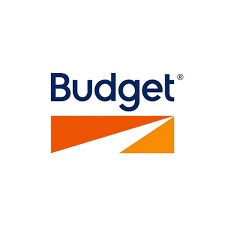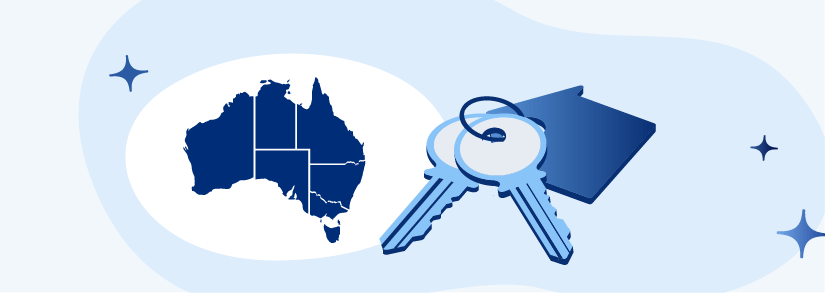Home Renting in Australia: A Guide for Tenants & Renters
The process of home renting can always feel a bit overwhelming, regardless of whether it’s your first time renting a home or you’re a seasoned tenant moving into a new home. In this guide to renting a home in Australia, we cover all the rent essentials needed to help you rent a place you'll love. Read on for how to rent a home in Australia.
How to Rent a Place: Step-by-step
Renting for the first time is a big step, and there is a lot to consider before signing a lease.
Before leaving your childhood home or your current place, it’s important to get everything you need and make a plan, so you’re not stuck with a new home you don’t really love. If you are unsure of where to begin, we have detailed the process of home renting below.
The steps for how to rent a home are:
- Look for a house for rent or a unit for lease
- Contact the landlord or property manager
- Schedule an in-person visit
- Submit your rental application
- Sign a rental tenancy agreement (lease)
- Submit your rental bond, rent in advance & renters insurance
- Submit a Property Condition Report
- Move-in at your new place

Whether you’re planning a move across town or gearing up for a road trip, Budget offers vans, trucks, and cars at over 190 locations across Australia. Pick the right size for your needs, add insurance or extras if you want, and book for however long you need—one-way and long-distance options are available. It’s a simple way to handle moving day, or just get around while travelling.
Things to Consider When Looking to Rent a House
Moving out and into your first home is exciting for many people as it means you get to decide what you need to live comfortably and make a place your own.
Before looking for a house to rent, it's a good idea to make a list of “must-have” qualities and “nice-to-have” qualities in a rental home so you can easily narrow your search to finding the right rental property.
Some things to consider include when looking to rent a house are:
- Occupants: Can you live with roommates, or do you want to live alone?
- Renting Budget: How much can you afford each month, including utilities and other rental costs?
- Size: How many bedrooms and bathrooms do you need?
- Property Type: Renting a house or a unit?
- Location: What locations are you willing to live in?
- Transportation: Do you need to be close to public transport or do you need a car space?
- Special Circumstances: Do you need a pet friendly or smoking friendly rental?
- Family: If you have children or plan to have children, are the local school systems good?

New House? – Get set up now!
Set up utilities at your new home in just one click!
Rental Application Form & Application Process
Once you have found a home that you are interested in, you will need to submit a rental application to be considered for the tenancy.
Many of those who have never rented worry they won’t qualify for a rental home because they don’t have a rental history. However, there are steps you can take as a first-time renter to have a better chance at getting the property of your dreams and certain documents can make it easier to get qualified to rent.
Consult our guide for first-time renters for all the information you need to rent your first home.
At the very minimum, expect to have the following documents prepared for applying to rent a home:
- Verification of employment and income
- References: A reference from your employer, neighbor, and a personal reference
- Photo ID
- A recent utility bill or phone bill
You may also be required to offer up more information, as well as a standard credit check as part of your rental application process. However, this is not always necessary.

Good Buyz offers a variety of sustainable smart home appliances and devices designed to work with renewable energy systems. Their range includes energy-efficient refrigerators, washing machines, smart thermostats, and lighting—all designed to reduce electricity use and integrate seamlessly with solar panels and battery storage. These products help you create a greener, more connected home by optimizing energy consumption automatically through smart controls and app-based scheduling.
Residential Tenancy Agreements
Once you have applied and been accepted, you will be expected to sign a tenancy agreement.
A residential tenancy agreement is another name for a lease, which is the contract that renter signs with the landlord of a property to be able to rent a place to live.
Residential tenancy agreements come in many forms. However, tenancy agreements in Australia are governed by a law called the rental the Residential Tenancies Act 1997 which sets out guidelines and stipulations for drawing up and signing a rental agreement.
All residential tenancy agreements (or rental contracts or lease agreements) must have the same basic information laid out on paper and any serious changes might result in your agreement being void.
According to the Residential Tenancies Act, a lease must include the following:
- Landlord, management, and tenant details
- The length and type of tenancy
- Conditions for breaking the contract early
- How much rent is due and how it will be paid
- The amount of bond to be paid
- Obligations of both parties for things such as maintenance, cleanliness, or use of premises
- Special terms such as pets, smoking, or guests
Residential tenancy agreements differ depending on the type of lease (short, long, or periodic), and which state you live in.
Residential leases fall into two categories:
- Fixed-term leases
- Periodic leases
Below we explain what each type of lease means, however for a more detailed overview, visit our complete guide on residential tenancy agreements and leases.
Fixed-term Leases
There are two types of fixed-term leases:
- Short Fixed-term Lease
- Long Fixed-term Lease
Fixed-term leases simply mean that there is an exact length, or rental term, established within the lease. This fixed-term can be anywhere from one month, six months, one year, or longer. Although fixed-term leases are the most common form of rental agreement, there are strict rules for breaking a lease that is fixed term.
Therefore renters should carefully weigh the decision before signing a fixed-term lease.
Short Fixed-term Lease
A short, fixed-term lease can be anywhere from one month up to five years but the “official” length of time depends on the state you live in (South Australia, for example, says a short fixed-term lease lasts no more than 90 days). These are standard leases, that may or may not be extended after the leasing term has ended.
Long Fixed-term Lease
Longer fixed-term leases are, as the name suggests, longer than a short fixed-term lease. These leases also allow for more flexibility with the terms of the lease such as rent increases, additional money for a bond, and modifications and maintenance to the property.
For more information on leaving your rental agreement early, you can read our guide on breaking your lease.
Periodic or Month-to-month Leases
Periodic leases are month-to-month rental agreements without an end date or specified term length. With a periodic lease, either the tenant or the landlord can end the agreement at any time with 30 days notice.
Periodic leases often begin as a fixed-term lease, and once the term expires it becomes a periodic lease.
Other Documents for Home Renting
Some properties may ask for additional documents when home renting. This can be especially true with private renting directly from a homeowner.
Documents that you may be asked to submit when home renting include:
- Rental Bonds
- Renters Insurance
- Rent in Advance
- Property Condition Report
You may be asked to submit a rental bond when applying to rent a home. A rental bond is a sum of money that acts as a security deposit in case there is any damage to the home caused as a result of your tenancy.
If you take proper care of the home and there is no damage, then the rental bond should be returned to you at the end of your tenancy
Some homeowners require the tenant to take out a renters insurance policy. This is especially true when renting privately. Renters insurance protects the renter and their possessions in case of a disaster at the property, such as fire, flooding, robbery etc.
In addition to submitting a rental bond, some landlords require several weeks of rent in advance. This is similar to a rental bond, however, the money is not returned at the end of the tenancy. Instead, it gets discounted from your first month's rent.
Lastly, almost all properties require tenants to fill out a Property Condition Report. read more about the Property Condition Report in the section below.
Property Condition Report & Inspection
Once you have visited the property, submitted your application and signed the tenancy agreement, you need to inspect the property.
This inspection will serve as an initial overview to help you find things to include in the Property Condition Report, which documents all the damage to the property that was there when you moved in.
Check the following things when inspecting a house or unit for lease:
- Damage to the interior and exterior of the home.
- Taps, appliances, wall sockets, and lights work properly
- Fixtures are properly attached and function properly (lighting, door handles, locks, wall hangings, etc.)
- Doors and windows function properly
- The photos and online listing match what is actually being rented
Need help organizing your move? Find checklists for moving, and tips for how to organize your move, with Selectra's moving house guides
Cost of Rent in Australia 2025
When considering your location when estimating what you will pay on average for rent in Australia.
Location is the single greatest factor in calculating monthly rent for a unit or home in Australia. Consider the state, the city and even the location within the city where you plan to live.
Prices in the center of the city are much higher than renting a house in the suburbs. If you are looking to lower your rent, consider looking in regional areas and factoring in the cost of transportation to and from the city.
Younger adults moving back in with their parents, students abroad leaving the cities, and changes to overseas migration and tourism have all meant that there are more vacant rentals available in the inner cities.
According to the Domain Rent Report from December 2024, the cheapest city to rent a house in Melbourne, VIC for both house and unit prices.
| Location | Unit: Average weekly rent | House: Average weekly rent | Regional House: Average weekly rent |
|---|---|---|---|
| Sydney, NSW | $490 | $600 | $480 |
| Canberra, ACT | $530 | $675 | N / A |
| Melbourne, VIC | $375 | $445 | $380 |
| Brisbane, QLD | $420 | $480 | $450 |
| Adelaide, SA | $360 | $450 | $320 |
| Perth, WA | $390 | $460 | $450 |
| Hobart, TAS | $428 | $500 | $420 |
| Darwin, NT | $480 | $600 | N / A |
| National average | $436 | $499 | $417 |
Source: Domain Rent Report, December quarter 2024
It’s important to remember that when renting, you’ll probably face more costs than just the rental price. Both upfront costs and recurring costs can be a surprise so it's best to include them in your renting budget.
Therefore consider the following costs of renting:
- Upfront rental costs: (Bond or security deposit, rent in advance, rental application processing fees, & moving fees)
- Recurring rental costs: (Renters insurance, utilities, internet, and phone plan)

New House? – Get set up now!
Set up utilities at your new home in just one click!
Commonwealth Rent Assistance (CRA)
Commonwealth Rent Assistance, also known as just Rent Assistance, is a federal program where if you receive certain Centrelink payments, such as low income support, you might also be eligible for Rent Assistance.
With Rent Assistance, there is a minimum amount you need to pay, and for every $1 above this amount, you’ll get $0.75 back.
The minimum amount needed to pay in rent varies depending on your living situation and dependent children status. A single individual living alone, for example, could get a maximum Rent Assistance payment of $140.80 every fortnight while a single person with 3 or more children could get up to $187.04 in Rent Assistance every fortnight.
Rent to Buy Agreements
Rent to own, or rent to buy, is a slightly different way of renting a home.
The basic idea is a tenant will rent a home for a period of time, and after, they will purchase it from the owner. The tenant and landlord agree upon the duration of the lease, and final selling price, before signing the lease and some of what the tenant pays in rent goes towards the final selling cost of the house.
Rent to buy agreements can be tricky and any financial issues with either party can lead to the tenant losing all of the money paid toward the property. However, rent to own is also a way for those who might not be able to save for the full deposit to become a homeowner.
Frequently Asked Questions
What are the key steps in renting a home in Australia?
Search for properties, contact the landlord or agent, attend inspections, submit applications with required documents, sign tenancy agreements, pay bond and rent, then move in.
What documents are typically required for a rental application?
Identification, proof of income (like payslips or bank statements), rental history or references, and contact details. Some states may have standardized forms with limited information requests.
How long does it take to get approved for a rental?
Typically 1-3 business days, depending on how complete your application is, the number of applicants, and how fast references and checks are completed.
What are residential tenancy agreements?
They are contracts between landlords and tenants outlining terms like duration, rent amount, bond, and conditions for maintenance and early termination, subject to state laws.
What types of rental agreements are common?
Fixed-term leases (short or long) with a set duration, and periodic leases (month-to-month) that don’t have a fixed end date and can be ended with notice.
What should first-time renters know?
Prepare all required documents, understand your rights and obligations, budget for upfront costs like bond and rent in advance, and carefully review tenancy agreements before signing.
Click below to find a better deal for your home!

